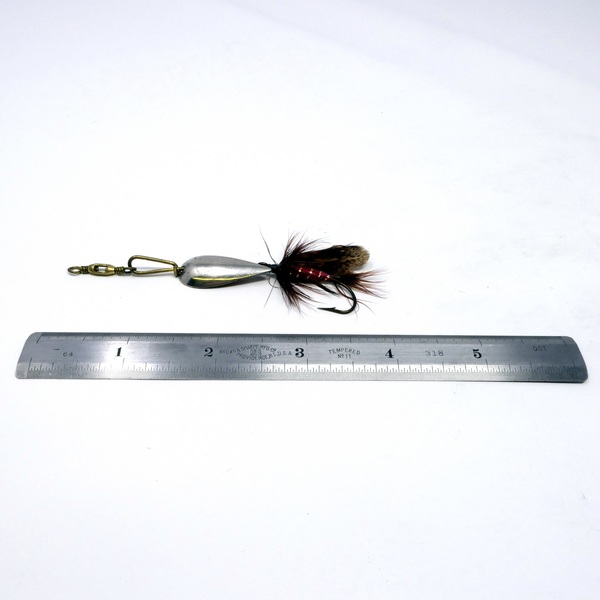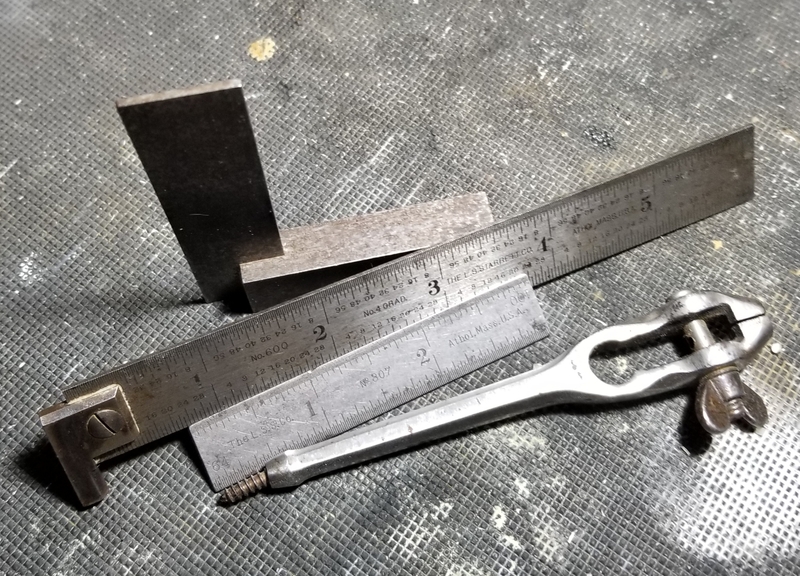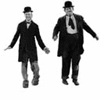
It can be hard to date old machinist tools. Some basic hand tools that Leroy Starrett patented in the 1880’s are still being made today virtually unchanged. This combination square is still being made but they have discontinued this tiny 4" version and changed the casting pattern. The maroon box also indicates that it was from the early 20th century.

Here is an early Starret 3" rule and small gold plated caliper. A key to dating rules is to look at the number fonts. Starrett's earliest tools used fancy script numbers, especially the numbers 2, 3, and 5.
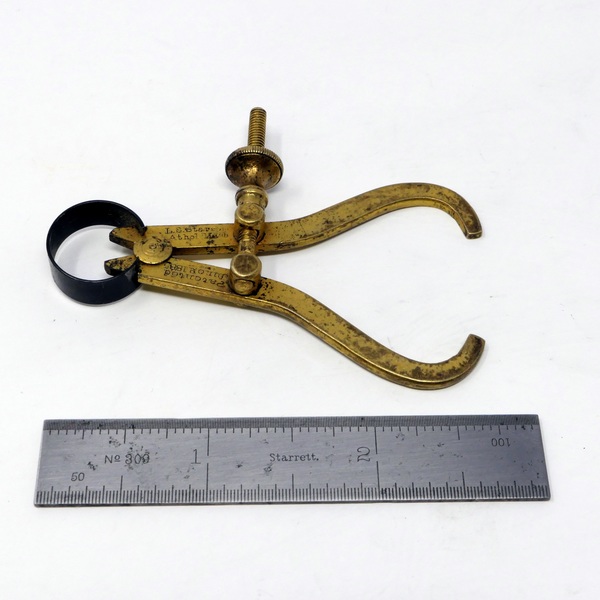
Another neat Starrett tool is this tiny 1" square which appears to have been discontinued in the 1940's.
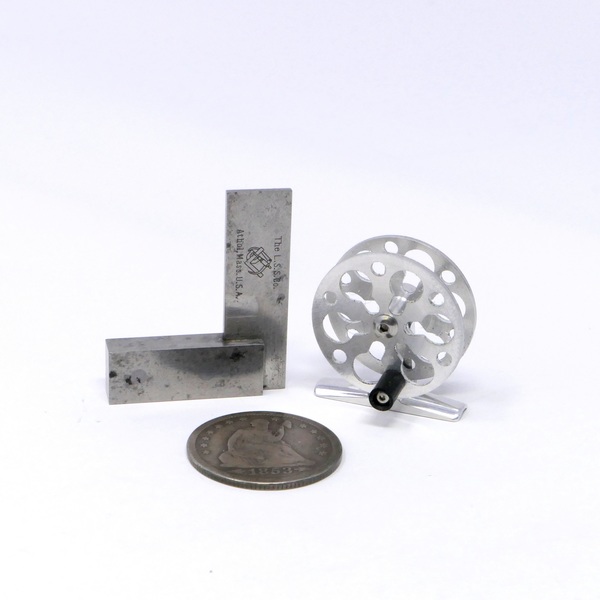
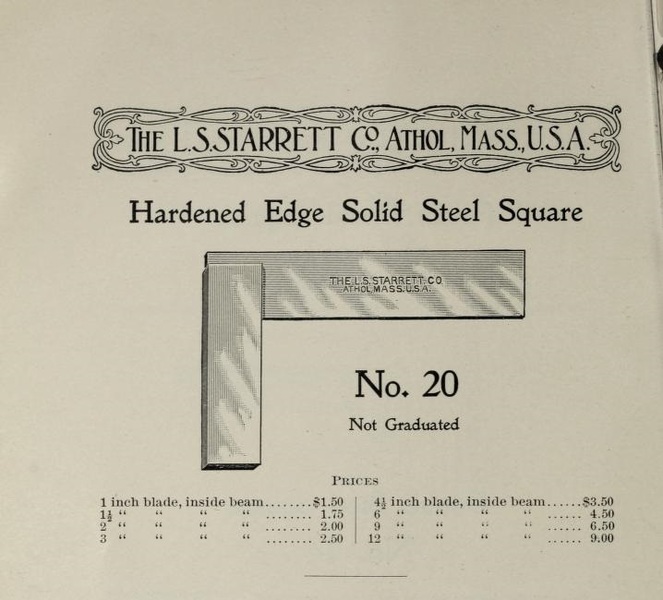
This Starrett № 160 machinists clamp is often confused for a small vise. The 1" version is very scarce and rarely described properly in auctions since they are all marked № 160. They can be spotted by carefully looking at the proportions and sometimes picked up for a song. The 1" version was also discontinued in the 1940's but the larger one is still made today. The blue finished steel is beautiful.
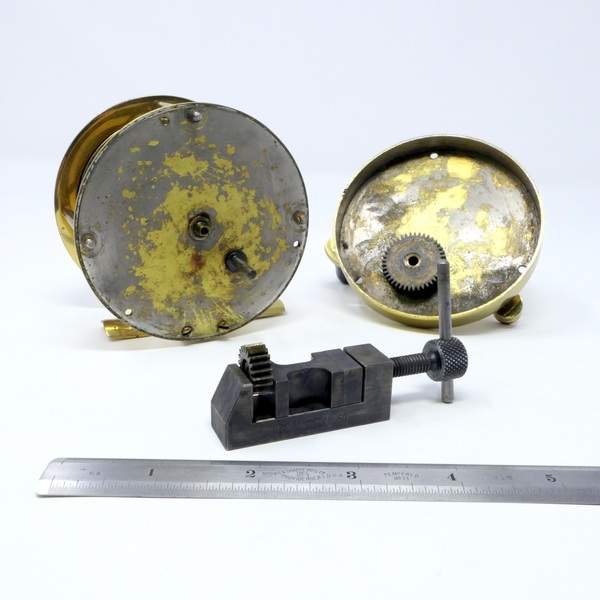
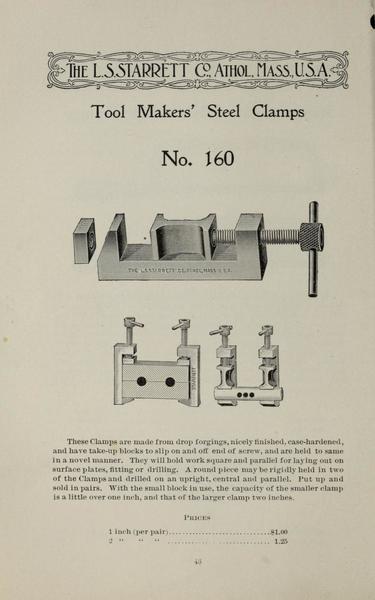
Here's an example of a tool that is brand new but has been in the Starrett catalogs for a century. These tiny drill indexes are also still available from Huot.

In addition to the gold plated Starrett caliper, here is a Stevens & Co Caliper. The coil spring design was patented by T. C. Page and George W. Hadley of Chicopee, MA on Feb. 8, 1870.
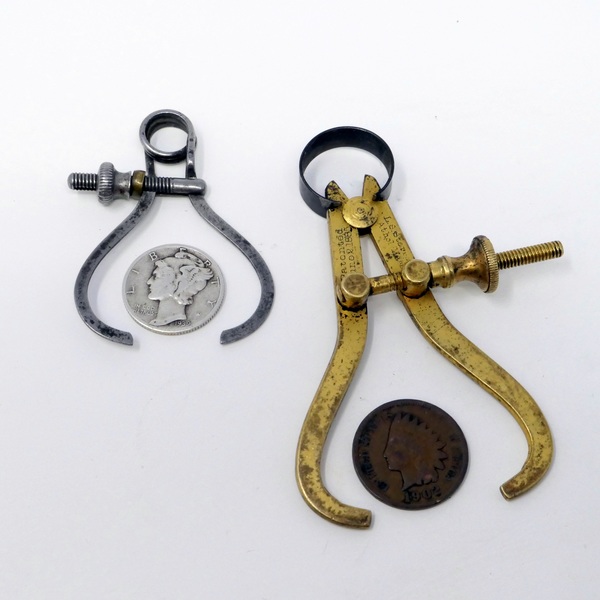
Lady legs were popular in the late 19th century. These Calipers were manufactured by Peter Lowentraut of Newark NJ. The Lady leg tweezers are marked "PAT APLD FOR" but I've yet to find the patent. Maybe one of ORCA's patent sleuths can help me.

Brown & Sharpe is a company that has been in business for 190 years. Fortunately they have changed names a few times and that can help in dating their tools. Tools marked "Darling, Brown and Sharpe" or "DB&S" are easy to find and were made prior to 1892 when Mr Darling left the firm. These early Triangle and Square rules came in sizes from 3"-6" long and had various increments from 1/8ths to 1/100ths. Newer ones can be found marked Brown & Sharpe and appear to have been made up till WWII.


The caliper square is another neat little tool. Here are a couple from the DB&S era in the smallest size, one of which with well modified jaws.


Nathan Ames of Boston, MA was granted Pat. No. 9,089 on July 6, 1852 for this unique centering square. These were later produced by Brown and Sharpe and available in several sizes. Here is the smallest 4" version from the DB&S era.
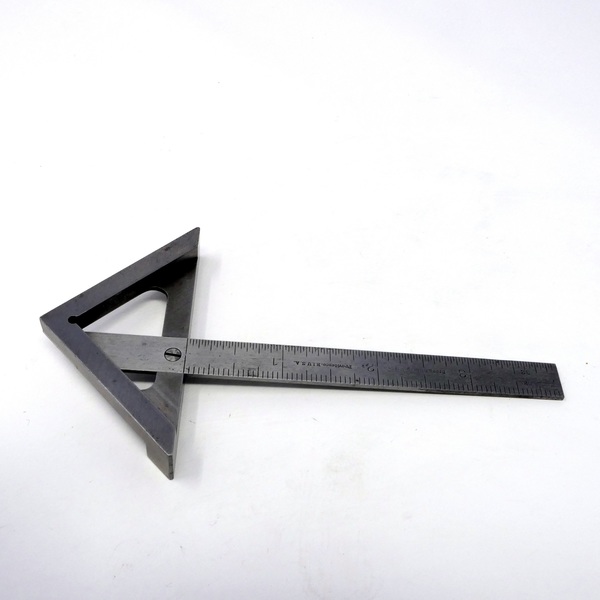

Handvises are another small tool that eventually found a use in the fishing world but their origins were more of a general holding tool often used for holding wire in the watchmaking trade as far back as the 17th century in France. Here is a small english made vise and a newer one made by the Mauser corporation.

Here are some other great tools from the watchmaking industry. A wide variety of dividers and calipers can be found, often hand made by the watchmaker himself. This brass pedestal tool might look like a small vise but is actually a poising tool, used to test poise of a watch balance. They can be relatively affordable and are a great way to display your favorite fly.
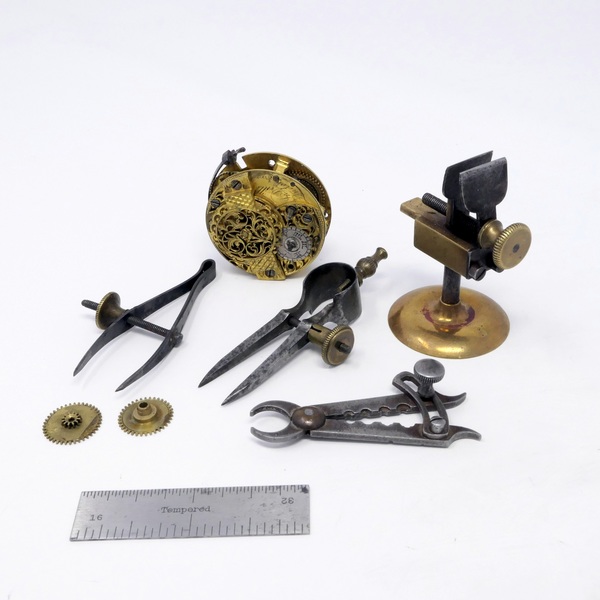
Lastly, I'll leave you with a picture of my absolutely favorite rule. This Brown & Sharpe 6" beveled edge rule is in beautiful condition.
